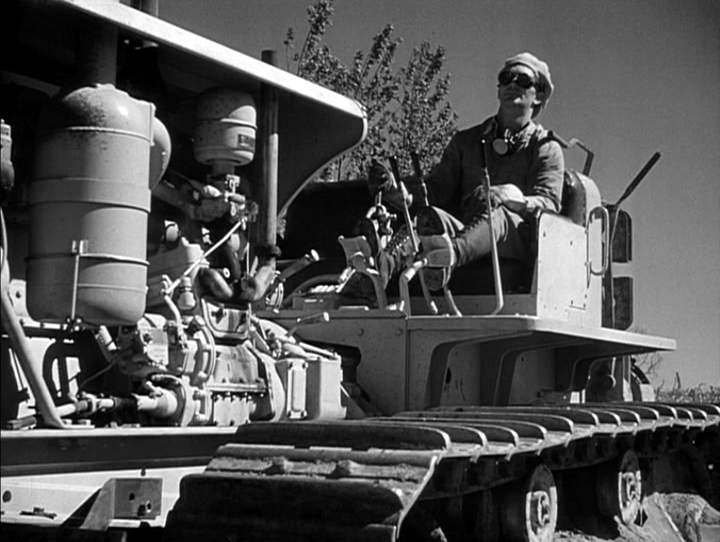
SummerHill Farm (my family farm)
“That man who is more than his elements knows the land that is more than its analysis. But the machine man, driving the dead tractor on land he does not know and love, understands only chemistry.” pg 148 Grapes of Wrath
In both the novel and the movie, the importance of land is a huge theme in Grapes of Wrath. Though the novel was published in 1939 and the film a year later, Grapes of Wrath still holds many parallels to the struggles of farmers today.
In 1935, there was 6.8 million farms in America while today, there are 2 million farms, still farming the same amount of acres (or even more). This substantial decrease in the amount of individuals choosing to farm and the slight increase in the amount of land being farmed is true across America, with many individuals expanding to keep up with both the high costs of farming and the global demand of increased food production. Personally, my family’s dairy farm still remains small in operation, milking around 50 cows and having a total herd count of 100. However, our farm is unique because we plant and harvest crops to feed our dairy herd, not the general public. In truth, the vast majority (98%) of dairy farms are family owned and operated, though it is hard to convince people you are still the small-time friendly farmer trying to scrape by when popular media is $500,000 machines plowing across thousands of acres and “truth” videos of animal cruelty being shared across social media (thanks, PETA).
Though the average American probably does not hold these extreme views, many do not know where their food comes from and who is responsible for feeding their families- they just care that it is cheap and accessible. This disconnect between farmer and consumer has widened over the years, allowing plenty of room for the media to mediate.
Steinbeck firmly believed that land grounds a farmer’s sense of self, with this belief being shown mainly through interactions with Muley and Grampa, with the former refusing to leave and the latter having to be dragged off, kicking and screaming. The scene of Grampa refusing to leave the only home he’s ever known, grasping at the dirt, is actually a true worldview of many farmers, who are strongly connected to their land and will do anything to protect it. This view can even be seen in my own Father, who seldoms leave the farm, always having an excuse or a new project to work on. The antithesis of this relationship is the invention of the tractor, which signals the destruction of the romanticism in farm life and introduces industrialization into nature. This view is clearly exemplified in the film scene when the CAT tractors plow over the individual houses and create one massive land, introducing a new relationship between tractor and land, with the removal of the farmer as the steward.

In truth, the majority of today’s farms rely heavily on machinery to make the farming process more efficient and expand the amount of land they can farm. This expansion allows the farmers to both increase their likelihood of profits and meet the demand of global food production. The profit function is most important, with the great instability in the farm economy causing many crop prices to fluctuate drastically throughout the year. Though wheat, corn and soybean prices have slightly risen in 2016, farmers are still wary due to the prices falling between 10-20% throughout 2015. The price of milk also fluctuates greatly (currently, farmers are getting $14/100 pounds (8 gallons) while the average gallon of milk is $3.50) which is why the majority of dairy farms are also larger in size. By having a large amount of acres or livestock, the farmer increases their chance of making a living, even if the prices are terrible (which they usually are).
Though once seen as a destruction of the relationship between the farmer and his land, modern equipment has been the only way for the farmer to keep up in this modern world. With everything being instantaneous, farmers have to find a way to make their product accessible and inexpensive, while still maintaining the wholesomeness of their product that Americans idealize. A dairy specific example of this is the utilization of milk machines. Though the utilization of machinery has been deemed as inhuman by animal rights activists, it has actually allowed for farmers to make the chore of milking cows more efficient to meet the global demand, while also keeping a consistency throughout milking for the cows to expect. While every industry has its flaws, at the end of the day, farmers are still trying to perfect the use of modern machinery to maintain a balance between respecting the land their family has lived on for years and honoring their public service of feeding our nation with the best food possible. Though it is not an easy job, these farmers are more than willing to rise to the challenge.

SummerHill Farm’s Cows
Sources:
http://www.barrons.com/articles/corn-wheat-and-soybean-prices-to-fall-in-2016-1452927138
http://sits.sjsu.edu/curriculum-resources/the-grapes-of-wrath/major-themes/
http://www.hoards.com/class1


 Arnold and Arthur from the film Easy Living (1937)
Arnold and Arthur from the film Easy Living (1937)

